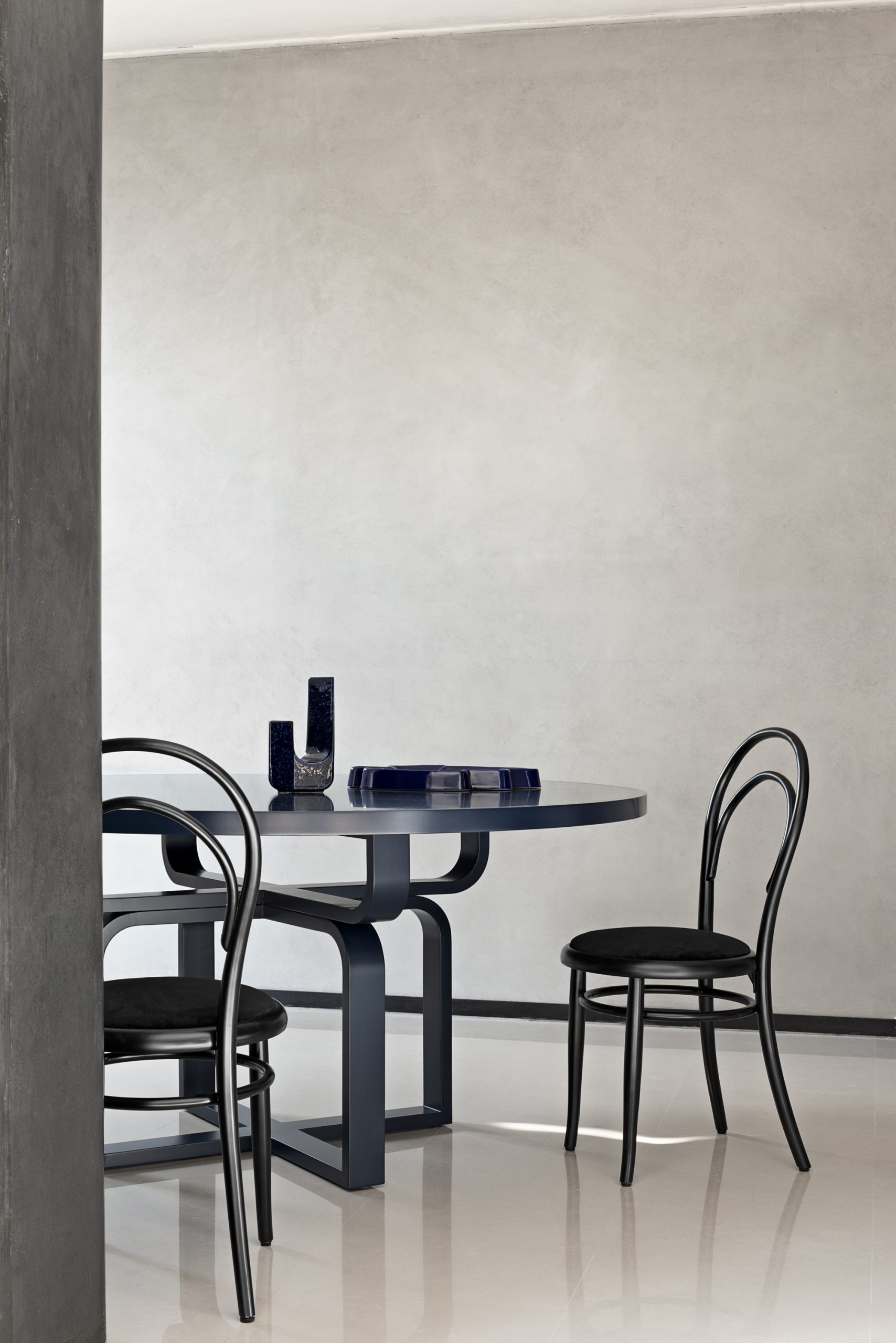Heritage designs the future. N.14 – design by Michael Thonet. 1860
Second appointment in our story.
This week’s protagonist is N.14, archetype of the curved wooden chair par excellence.
An evergreen, our best-known and best-selling product, a veritable styling phenomenon that even Adolf Loos considered to be the best design product ever created, an extraordinary blend of technique and style.
The chair that immediately captivated everyone, aristocrats, artists and politicians; it was perfect in restaurants as at home, in offices and premises of all kinds. The result of almost twenty years of technological research, No.14 was born from the creativity of Michael Thonet who designed it between 1859 and 1860.
At once, it became everyone’s « bistro chair », robust, simple and affordable: it cost three shillings, as much as three dozen eggs. It is minimalist in its use of material and for the number of wood pieces from which it is made, only five.
A timeless item, it is considered the first true example of industrial design. It was quickly offered in numerous variants with woven cane, wood or fabric seats.
Following the most classic of the Thonet family traditions, this chair was designed by recovering and modifying an existing product; in this case, the No.8 chair.
A fascinating and evolving story, as Giovanni Renzi tells us in his blog Legno Curvato, one of the leading international experts in the Thonet tradition: from the very first moment, in fact, No.14 underwent continuous evolution and improvements until the end of the nineteenth century when the model that is still part of our catalogue became firmly established.
Over time, construction methods changed; in fact, between 1859 and 1861, the steam-bending technique applied to beechwood reached its ultimate expression. In 1861 the production of laminated wood was definitively replaced by the adoption of solid wood.
A gradual evolution modified the proportions, the dimensions of the seat and the height of the back that is made from a single piece of wood together with the rear legs. The closure of the seat curves was adapted and a ring reinforcement joining the legs was also added later. Over the years, the screws and fittings that locked the various pieces together have also changed, together with the assembly method itself.
One of the most intriguing features is the packaging, still today one of the most iconic images in the history of steam-bent wood: a dedicated solution was designed which allowed for 36 disassembled chairs to be shipped in one cubic metre. A commercially strategic detail considering that over fifty million pieces were sold over seventy years. Over 4,000 cases were shipped by land and by sea, even as far as Japan, in 1905 alone.
N.14 has always been an integral part of our catalogue, a best-seller celebrated in 2010 on the occasion of the 150th anniversary of its introduction with a special version that incorporates an oval ring for the backrest instead of the classic arch.
To be continued.





